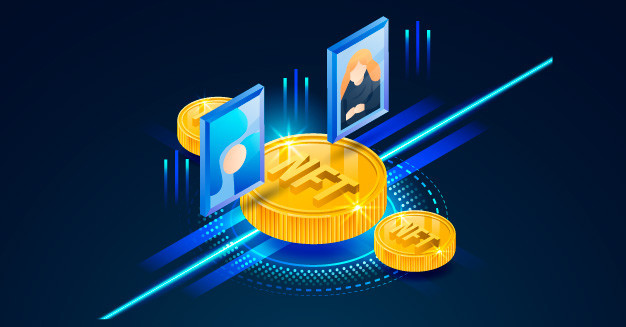views

From Simple Scams to Sophisticated Schemes
Phishing attacks have come a long way from the poorly worded emails of the early 2000s. Cybercriminals have refined their tactics, making them more convincing and harder to detect. In 2024, phishing schemes often employ advanced technologies like artificial intelligence and machine learning.
These technologies allow cybercriminals to create more personalized and convincing messages. For instance, AI can analyze social media profiles to craft targeted emails that appear to come from trusted sources. This level of sophistication increases the likelihood that unsuspecting users will fall for the scam.
The Rise of AI-Driven Phishing
AI-driven phishing is a game-changer. By using machine learning algorithms, cybercriminals can automate the process of creating and sending phishing emails. These emails are tailored to the recipient's interests and behaviors, making them incredibly hard to distinguish from legitimate communications.
For example, if you frequently shop online, you might receive a phishing email that looks like a receipt from your favorite retailer. The email could contain a link to a fake website designed to steal your personal information. This level of customization is why AI-driven phishing is so effective and dangerous.
Deepfakes and Phishing
Deepfake technology has added a new layer of complexity to phishing attacks. Deepfakes are manipulated videos or audio recordings that can make it appear as though someone is saying or doing something they never did. In 2024, cybercriminals are using deepfakes to create convincing phishing scams.
Imagine receiving a video message from your boss asking you to transfer funds to a new account. The video looks and sounds just like your boss, but it's actually a deepfake created by cybercriminals. This tactic exploits our trust in visual and auditory cues, making it exceedingly difficult to identify the scam.
The Anatomy of a Modern Phishing Attack
Social Engineering at Its Finest
Social engineering remains a core component of phishing attacks. Cybercriminals manipulate human psychology to trick victims into divulging sensitive information. In 2024, these tactics have become more sophisticated and harder to spot.
One common technique is the use of urgency. Phishing emails often create a sense of panic, urging recipients to act quickly to avoid negative consequences. This could be a warning about a compromised account, a missed payment, or a limited-time offer. The goal is to pressure you into clicking a malicious link or providing personal information without thinking.
The Role of Spoofing
Spoofing is another critical element of phishing attacks. Cybercriminals create fake websites or email addresses that mimic legitimate ones. In 2024, spoofing techniques have become more advanced, making it challenging to identify fraudulent sites.
For example, a phishing email might contain a link to a website that looks identical to your bank's login page. The URL might have a slight variation, such as replacing an "L" with a "1," which can be easily overlooked. Once you enter your login credentials, they are captured by the cybercriminals.
Multi-Stage Phishing Campaigns
Modern phishing attacks often involve multiple stages. Instead of a single email, cybercriminals might send a series of messages designed to build trust and gather information gradually. This approach increases the chances of success.
For example, you might receive an initial email asking you to confirm your contact details. Once you respond, you get another email with a link to a fake website. Each stage of the campaign is meticulously planned to lead you closer to the final objective, which is usually the theft of sensitive information.
Protecting Yourself from Phishing Attacks
Recognizing the Signs of Phishing
The first step in protecting yourself from phishing is learning to recognize the signs. While phishing emails have become more sophisticated, they often share common characteristics that can help you identify them.
Look out for:
- Unusual Sender Addresses: Even if the display name looks familiar, check the email address for any abnormalities.
- Generic Greetings: Phishing emails often use generic greetings like "Dear Customer" instead of your name.
- Spelling and Grammar Mistakes: Many phishing emails contain typos and grammatical errors.
- Suspicious Links or Attachments: Hover over links to see the actual URL, and be wary of unexpected attachments.
Strengthening Your Defenses
Technology can also play a vital role in protecting against phishing attacks. Here are some tools and practices to consider:
- Email Filtering Tools: Use advanced email filters to detect and block phishing emails.
- Multi-Factor Authentication (MFA): Enable MFA for your accounts to add an extra layer of security.
- Regular Software Updates: Keep your software and antivirus programs up-to-date to defend against new threats.
Educating Your Team
For businesses, employee education is crucial in the fight against phishing. Regular training sessions can help your team recognize phishing attempts and respond appropriately. Consider implementing simulated phishing attacks to test and improve your organization's readiness.
Provide resources like:
- Training Workshops: Conduct training workshops to teach employees about the latest phishing tactics and how to stay updated with the latest phishing news.
- Phishing Simulations: Use tools to simulate phishing attacks and assess your team's response.
- Reporting Mechanisms: Encourage employees to report suspicious emails to IT for further investigation.
Conclusion
Phishing attacks are evolving rapidly, becoming more sophisticated and harder to detect. By understanding these emerging tactics and implementing robust defenses, you can protect yourself and your organization from falling victim to these scams.
Stay vigilant, educate your team, and leverage technology to stay one step ahead of cybercriminals. Remember, the best defense against phishing is a combination of awareness, education, and the right tools.
For more insights and tips on cybersecurity, be sure to explore our other resources. Stay safe out there!











